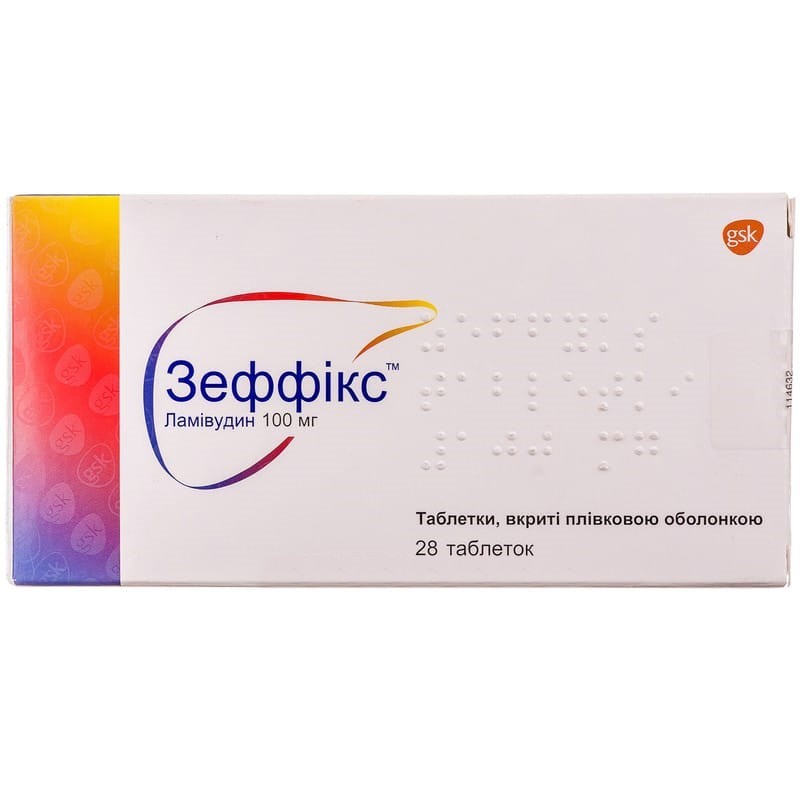



 Secure and encrypted payment processing
Secure and encrypted payment processing We ship to over 40 countries including the USA, UK, Europe, Australia and Japan
We ship to over 40 countries including the USA, UK, Europe, Australia and Japan Guaranteed refund or reship if you haven't received your order
Guaranteed refund or reship if you haven't received your orderLamivudine ((2r-cis) -4-amino-1- [2- (hydroxymethyl) -1,3-oxathiolan-5-yl] -2 (1n) -pyrimidine) is an antiviral drug with high activity against hepatitis B virus . the active form of lamivudine is lamivudine triphosphate, which is a substrate for hepatitis B virus polymerase. further viral dna formation is blocked by incorporation of lamivudine triphosphate into its chain. metabolism of dna in cells not infected with the virus, lamivudine triphosphate does not violate.
Lamivudine is well absorbed from the digestive tract, its oral bioavailability in adults is 80–85%. The maximum concentration in blood serum is reached after 1 hour. When taken in therapeutic doses (100 mg / day), it is about 1.1-1.5 μg / ml, the minimum concentration is 0.015-0.020 μg / ml. Taking lamivudine with food slows the time to reach maximum concentration and its level (up to 47%), but does not affect AUC, so the drug can be taken regardless of food intake.
When used in a therapeutic dose, the pharmacokinetics of lamivudine is linear. Slightly bound to plasma proteins. According to some reports, lamivudine penetrates the central nervous system and is determined in the CSF. The average ratio of lamivudine levels in CSF and serum 2–4 hours after oral administration is approximately 0.12.
5–10% of the drug is metabolized in the liver. The average value of the total clearance of lamivudine is 0.3 l / h. The elimination half-life is 5–7 hours. Most of lamivudine is excreted unchanged in the urine by glomerular filtration and tubular secretion. Renal clearance is approximately 70% of the total clearance.
Treatment of chronic hepatitis B against the background of virus replication.
Adults and children 12 years of age and older: 100 mg 1 time per day.
Children aged 2 to 11 years: 3 mg / kg 1 time per day; the maximum daily dose is 100 mg.
Safety and efficacy of the drug in children under 2 years of age have not been established.
In children, as well as in patients who cannot swallow tablets, it is recommended to use Zeffix in the form of a solution for oral use.
The drug is taken regardless of the meal.
Discontinuation of Zeffix treatment is possible in patients with normal immunity after reaching the seroconversion of HbeAg and HbsAg. The question of canceling treatment should also be considered in case of insufficient treatment effectiveness, which is manifested by exacerbation of hepatitis.
After discontinuation of Zeffix therapy, dynamic monitoring of patients is recommended in order to timely identify a possible exacerbation of the disease.
In patients with hepatitis in the decompensation phase, discontinuation of treatment is not recommended. To date, there is limited evidence of maintaining seroconversion for a long time after discontinuation of Zeffix therapy.
In patients with moderate and severe renal failure, serum lamivudine levels increase due to a decrease in renal clearance. In this regard, patients with creatinine clearance less than 50 ml / min should reduce the dose. If it is necessary to use a dose below 100 mg, Zeffix in the form of a solution for oral administration (5 mg / ml) should be used. In children with renal failure, the dose is reduced in the same proportion (tab. 1, 2).
Table 1. Dosage for impaired renal function in adults and children 12 years of age and older
| Creatinine clearance, ml / min | Zeffixs initial dose, mg | Zeffix maintenance dose, mg |
| 30–50 | 100 | 50 |
| 15–30 | 100 | 25 |
| 5–15 | 35 | 15 |
| 5 | 35 | 10 |
Table 2. Dosage for impaired renal function in children aged 2-11 years
| Creatinine clearance, ml / min | Zeffixs initial dose, mg / kg | Zeffix maintenance dose, mg / kg |
| 30–50 | 3 | 1,5 |
| 15–30 | 3 | 0,75 |
| 5–15 | 1 | 0,45 |
| 5 | 1 | 0,3 |
According to the data obtained in patients undergoing hemodialysis (up to 4 hours 2-3 times a week), after an initial dose reduction of lamivudine according to creatinine clearance, there is no need for further dose adjustment for the period of hemodialysis.
According to data obtained in patients with liver failure, including terminal stages in patients before liver transplantation, impaired liver function does not significantly affect the pharmacokinetics of lamivudine, therefore, it is not necessary to reduce the dose in this group of patients unless liver failure is accompanied by renal failure.
Hypersensitivity to lamivudine or other components of the drug.
The frequency of side effects when taking Zeffix is comparable to that when taking a placebo. the most common side effects are: general malaise and fatigue, respiratory infections, headache, discomfort and abdominal pain, nausea, vomiting and diarrhea. Quite often, hepatobiliary disorders were observed, such as an increase in alat activity and serum bilirubin levels, symptoms of liver failure, and an increase in KFK. rarely -